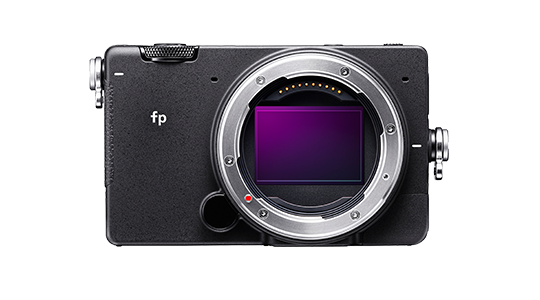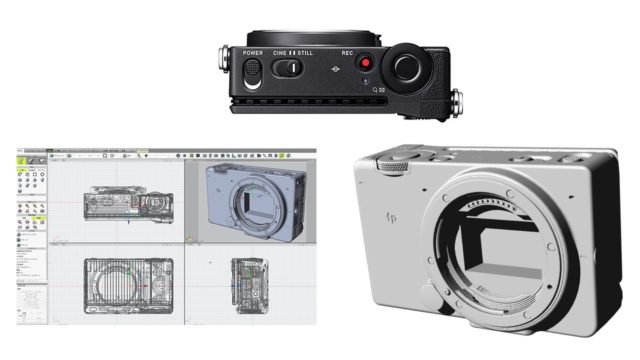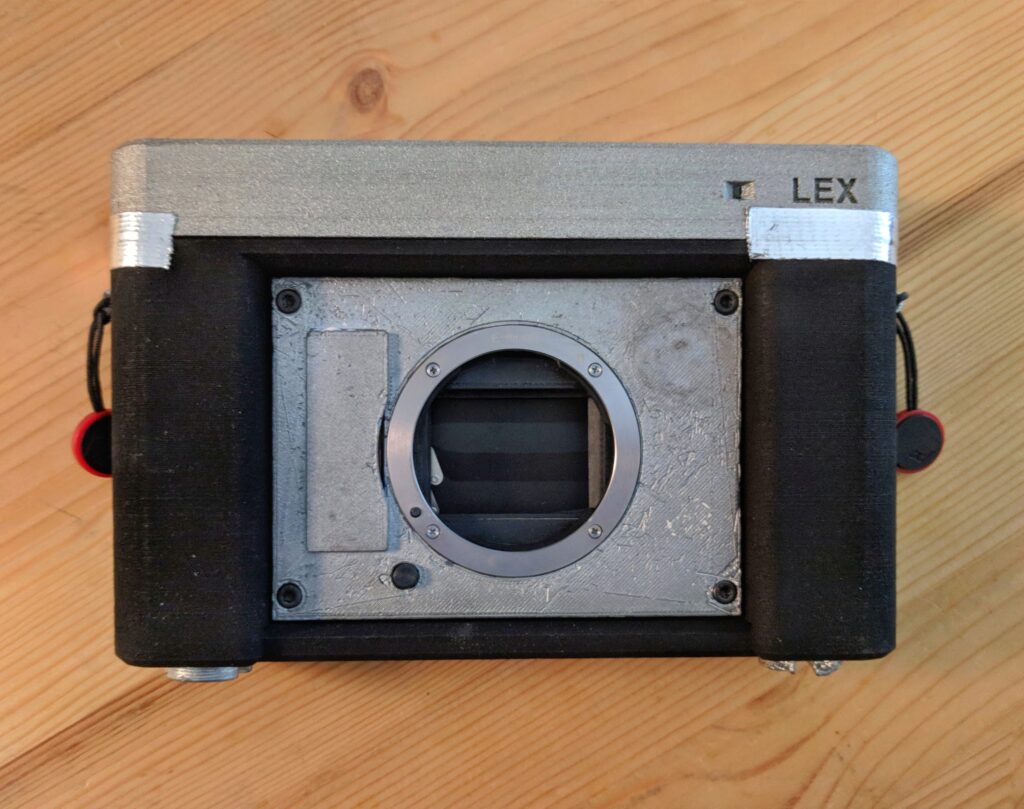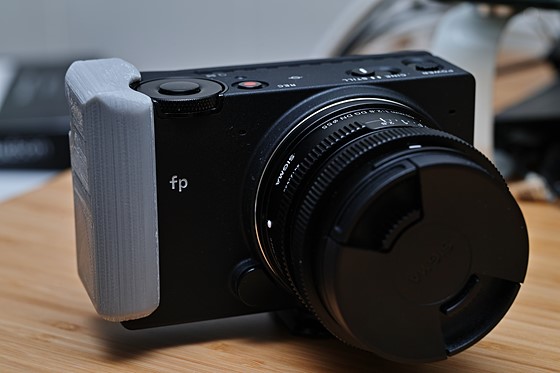It’s rare for camera companies to give people the chance to develop their own 3D printed accessories to use around the camera’s body. One camera company that has recently done this is Sigma, with their FP camera. Sigma has uploaded the 3D models for the FP camera body on their official website, which are available for everyone.
The FP camera is Sigma’s first L mount camera, the world’s smallest and lightest full-frame mirrorless camera with interchangeable lens. FP was first announced in July 2019 and this tiny camera seems to be pretty powerful. The FP is one of the most anticipated cameras of the last few years and is a small very compact full-frame camera. The camera is capable of shooting 12-Bit Cinema DNG RAW to an external SSD. It also has multiple 1/4-20″ threaded sockets, one underneath the camera for mounting a tripod, and one on each side. Central to the camera is the idea that it is a single module in a wide array of accessories that can be used to optimize it for, say, use as a video camera in a studio or through other optimized configurations.
The 3D models for the camera body are useful for manufacturers that want to develop their own products such as grips, cages, and other accessories, to fit around the FP camera. Inventors and creative people at home could also use them to adapt the Sigma to their world.
It’d be nice if more camera companies started offering their camera’s 3D models for buyers who would love to do more with them. We know that 3D printed camera accessories are already a “thing” and there are some pretty creative minds out there.
Photographers like Mathieu Stern, from France, created a lens made out of ice for his camera. Stern modified his Sony camera in order to fit and hold the ice lens by creating a 3D printed body. To accomplish the ice lens, Stern went to Diamond Beach, located in the east of Reykjavik, Iceland. There, he found an iceberg and, using a ball maker, he was able to extract a piece of ice. Later, after many tries, he created the ice lens and fit it into the lens holder he had 3D printed. With the ice lens, he achieved foggy and surreal images.
Hobbyist Alexander Gee, who appreciates film cameras, is almost done creating something a bit different, the LEX camera. As Gee describes, “the LEX is a camera which lets you use your E-Mount lenses with your favorite film emulsions”. Gee likes to use a Sony E-Mount with native E-Mount lenses to shoot, but sometimes he likes the aesthetic film cameras provide, which are hard to find these days. The problem is that Sony is the only camera company that has never built a film camera, so Gee knew what it was needed to be done. According to him, he created “the world’s first Sony E-Mount 35mm film camera” by mixing 3D printing with soldering and electronics. By using the shutter mechanism from a Sony A7, he built the prototype of the LEX together with a 3D printed body of the camera with SLS nylon, which he later dyed and coated as to prevent any ambient light from entering the camera.
But Gee is not the only one who loves a good film camera. Dora Goodman makes open-source 3D printed cameras, as well as camera straps and other accessories. Goodman is part of a movement that is dedicated to making high-quality 3D printed projects with other design and photography enthusiasts in order to share their concepts and ideas with creative minds around the world. One of Goodman’s project is the Goodman One Camera, a camera she has been working for a long time. Her idea was to make a modular camera that could easily accept leaf shutter lenses, to dress up the classical film cameras in a more modern look. The open source projects are available to anyone with access to a 3D printer through the Goodman Lab website.
If other camera companies follow Sigma’s steps into releasing their cameras’ 3D models to everyone, people like Gee, Goodman, and Stern could create interesting and innovative accessories for cameras that can be used by anyone. Right now, Sigma has released 13 3D models and we can already appreciate users on DPReview discussing about the FP camera, and sharing creations with the rest of the community.
One of DPReview’s user, “JMA60”, has created and 3D printed a grip for the FP camera. This user used Sigma’s 3D models and adapted it according to his needs. As the user shared, he was looking for something “more suitable for one-handed grasping”. Could this lead to more people participating in producing new camera accessories now that Sigma shared its 3D models? Hopefully, more camera companies will follow Sigma’s steps and will let anyone with a 3D printer design a better experience for using their cameras.
[Sources: Sigma, DPReview, Cinema5d]Subscribe to Our Email Newsletter
Stay up-to-date on all the latest news from the 3D printing industry and receive information and offers from third party vendors.
Print Services
Upload your 3D Models and get them printed quickly and efficiently.
You May Also Like
3D Printing News Briefs, July 2, 2025: Copper Alloys, Defense Manufacturing, & More
We’re starting off with metals in today’s 3D Printing News Briefs, as Farsoon has unveiled a large-scale AM solution for copper alloys, and Meltio used its wire-laser metal solution to...
3DPOD 260: John Hart on VulcanForms, MIT, Desktop Metal and More
John Hart is a Professor at MIT; he´s also the director of the Laboratory for Manufacturing and Productivity as well as the director of the Center for Advanced Production Technologies....
3D Printing News Briefs, June 28, 2025: Defense Accelerator, Surgical Models, & More
In this weekend’s 3D Printing News Briefs, 3YOURMIND was selected to join an EU Defense Accelerator, and PTC has announced model-based definition (MBD) capabilities within Onshape. Finally, a study out...
EOS in India: AM’s Rising Star
EOS is doubling down on India. With a growing base of aerospace startups, new government policies, and a massive engineering workforce, India is quickly becoming one of the most important...


 Image via Sigma Global
Image via Sigma Global Image via Cinema5d
Image via Cinema5d Image by Mathieu Stern
Image by Mathieu Stern Image via LEX Optical
Image via LEX Optical
 Image via DPReview, by JMA60
Image via DPReview, by JMA60






























